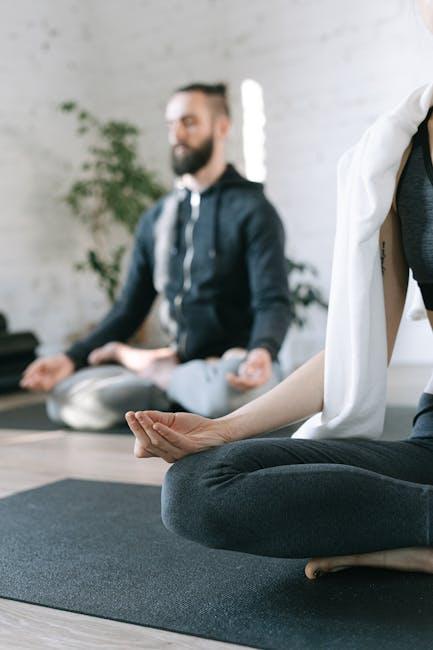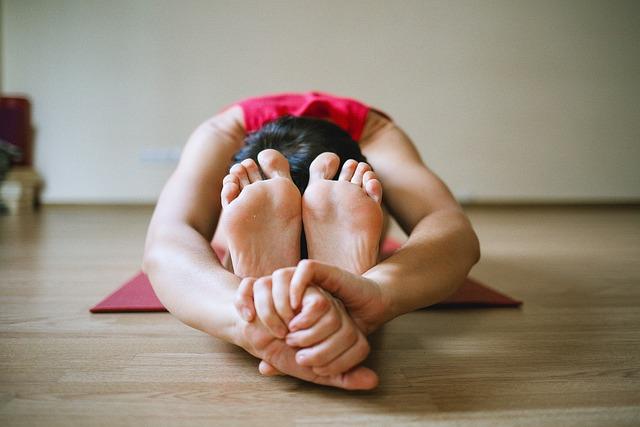In a world where connections are often formed through screens and fleeting interactions, the timeless practice of yoga offers a refreshing avenue for cultivating deeper bonds. Enter partner yoga—a harmonious blend of movement and mindfulness that invites pairs to explore trust and connection through synchronized breath and movement. This unique approach to yoga not only enhances physical flexibility and strength but also fosters a profound sense of trust and communication between partners. In this article, we delve into the world of partner yoga techniques, unveiling how these shared practices can transform relationships by building trust, enhancing communication, and nurturing a deeper understanding between individuals. Whether you’re practicing with a friend, family member, or significant other, partner yoga offers an opportunity to transcend the ordinary, inviting you to connect on a more meaningful level.
Enhancing Connection Through Breath Synchronization
In the realm of partner yoga, one of the most profound practices is the art of aligning breaths with your partner. This shared rhythm not only enhances physical harmony but also nurtures a deeper emotional connection. By attuning your inhalations and exhalations, you can foster a silent dialogue that transcends words, cultivating trust and empathy. The practice becomes a dance of presence and awareness, where each breath serves as a bridge, linking two souls in a harmonious flow.
- Mirrored Breathing: Sit facing each other, hands resting on knees. Begin to synchronize your breath, inhaling and exhaling in unison. Feel the shared energy and let it guide you into a serene state of mutual understanding.
- Back-to-Back Breathing: Sit with your backs touching. As you breathe together, visualize your partner’s breath as an extension of your own, creating a seamless cycle of give and take.
- Breath Counting: Choose a count, such as four counts in and four counts out. Take turns leading the breath count, allowing each partner to guide and follow, building trust in shared leadership.
Incorporating these techniques into your practice can transform the way you connect with your partner, creating a foundation of trust that extends beyond the yoga mat.

Exploring Balance and Support with Partner Poses
In the realm of partner yoga, the dance between balance and support is both artful and therapeutic. This dynamic practice invites pairs to engage in a series of poses that challenge their physical alignment and emotional connection. As partners work together, they develop a deeper understanding of each other’s strengths and vulnerabilities, ultimately fostering a sense of mutual trust. The essence of partner yoga lies in the shared responsibility of maintaining equilibrium, where each participant becomes both a foundation and a beacon of support.
- Double Tree Pose: Stand side by side, with your outer arms resting around each other’s waists for stability. As you lift your inside leg, press the sole of your foot against your inner thigh or calf. This pose encourages both partners to rely on one another for balance.
- Seated Forward Bend: Sit facing each other with your legs extended and soles touching. Grasp each other’s forearms and take turns gently pulling one another into a forward bend. This pose emphasizes the ebb and flow of giving and receiving support.
- Partner Warrior III: Stand facing each other, holding hands. As you both lean forward, extend one leg back and hinge at the hips, creating a T-shape. This pose challenges partners to maintain balance while supporting each other in a delicate dance of trust.
Through these poses, partners not only strengthen their physical cores but also cultivate an emotional resilience that enhances their relationship both on and off the mat. Each pose serves as a reminder that balance is not a solitary pursuit but a shared journey of trust and mutual support.

Cultivating Mindfulness and Presence Together
Engaging in partner yoga is an enriching way to deepen both your yoga practice and your connection with another person. By synchronizing your breath and movements, you cultivate a shared sense of mindfulness that anchors you in the present moment. This practice encourages partners to communicate through non-verbal cues, enhancing trust and mutual understanding. With each pose, you are reminded to be aware of not just your own body, but also the subtle shifts and needs of your partner.
- Double Tree Pose: Stand side by side and link arms, focusing on finding balance together. Feel the grounding energy from your partner as you both root down into the earth.
- Seated Forward Fold with Back Support: Sit back to back, with legs extended in front of you. As one partner folds forward, the other gently supports their back, offering a sense of security and support.
- Partner Twist: Sit facing each other with legs crossed. Place your right hand on your partner’s left knee and your left hand behind you. Twist gently to deepen the stretch, trusting your partner to guide you safely through the movement.
These techniques not only enhance physical flexibility but also strengthen emotional bonds, making yoga a profound journey of shared exploration and trust-building.

Guided Relaxation Techniques for Deepening Trust
In the serene world of partner yoga, guided relaxation techniques play a pivotal role in fostering a profound sense of trust. These techniques, which often incorporate synchronized breathing and gentle touch, encourage partners to let go of apprehensions and embrace vulnerability. By sharing a mindful moment, partners can attune to each other’s energy, creating a harmonious connection that transcends verbal communication. Engaging in these practices regularly not only deepens trust but also cultivates a sense of security and openness within the relationship.
- Breath Synchronization: Begin by sitting back-to-back with your partner, aligning your spines. Focus on matching your breath with theirs, creating a shared rhythm that fosters unity and understanding.
- Guided Visualization: Close your eyes and visualize a serene landscape together, guided by a calming voice. This shared mental journey can enhance empathy and emotional connection.
- Gentle Touch Exercises: Incorporate light touch, such as holding hands or gentle shoulder presses, to build a tactile sense of trust and reassurance.
These techniques are not just exercises; they are an invitation to explore the depths of trust with your partner, creating a foundation that is both supportive and nurturing.

